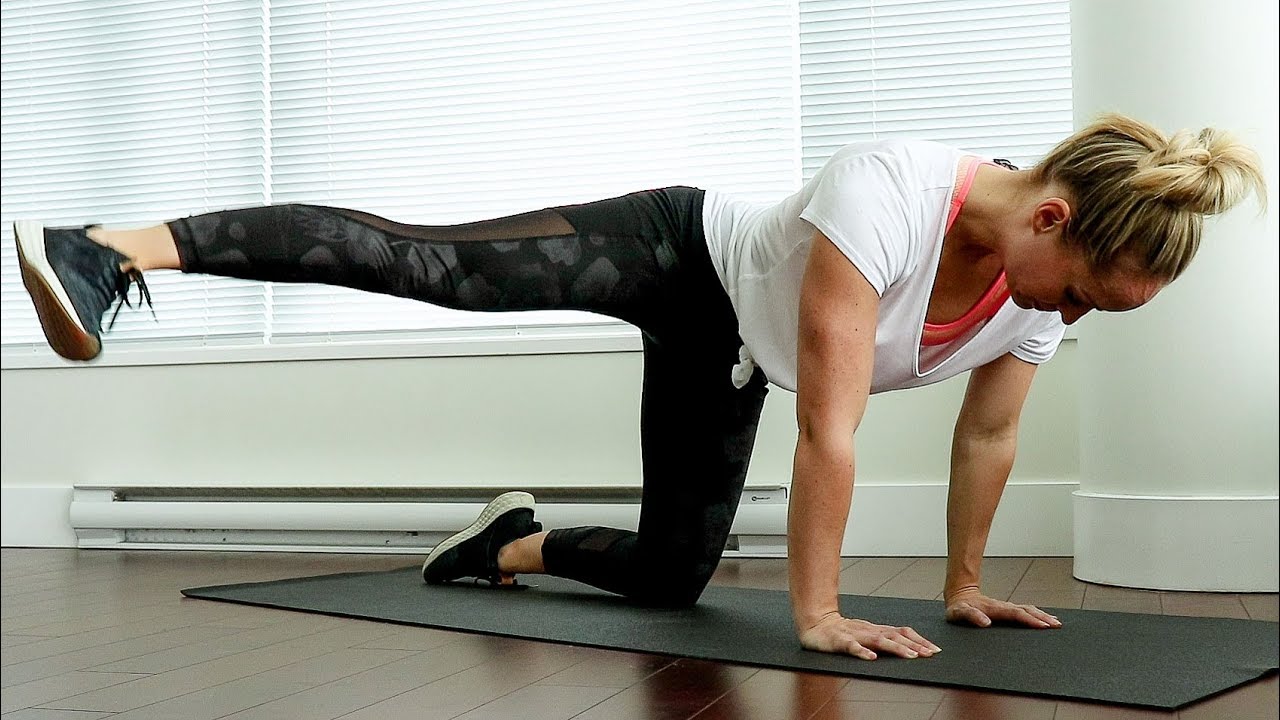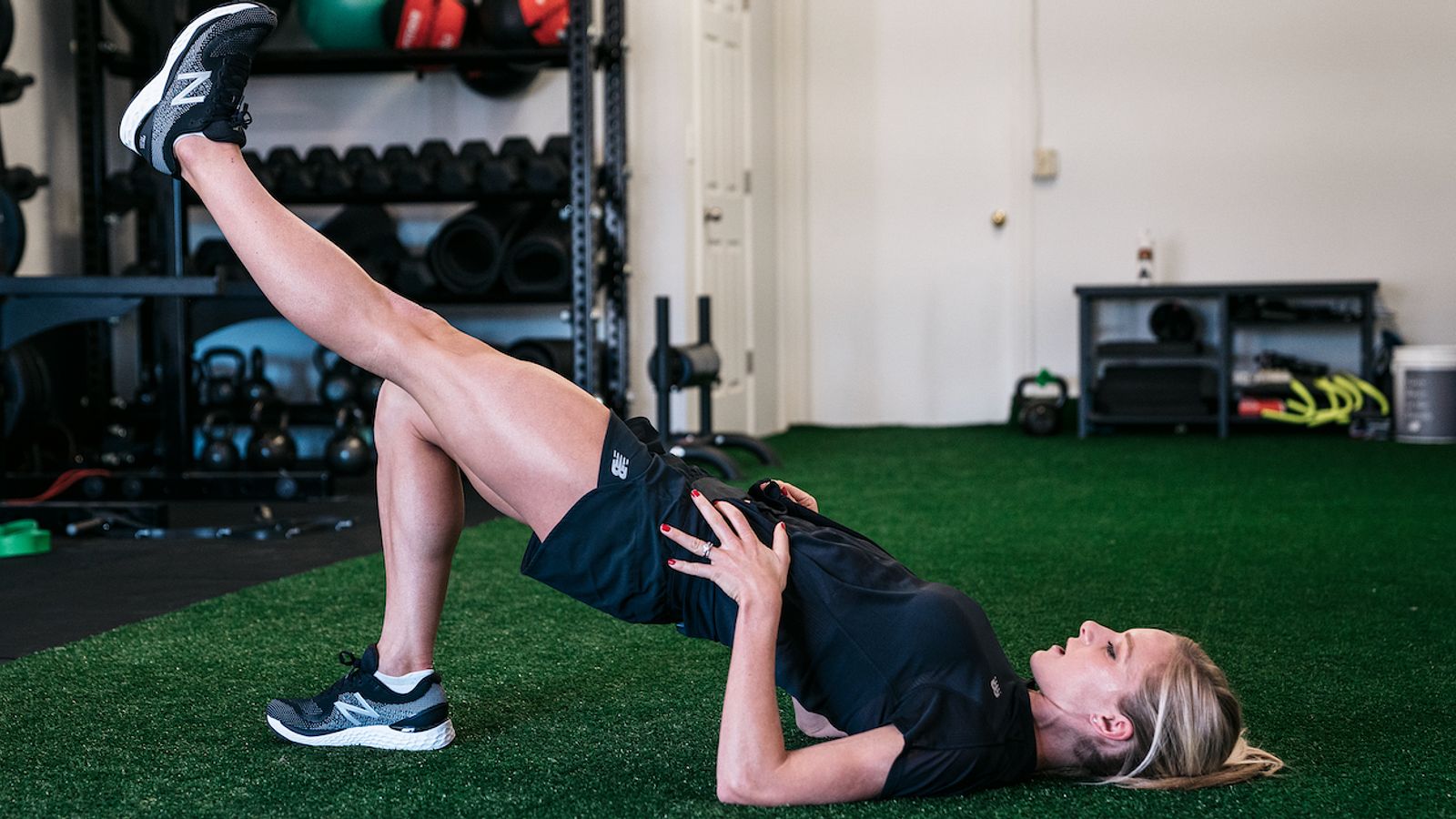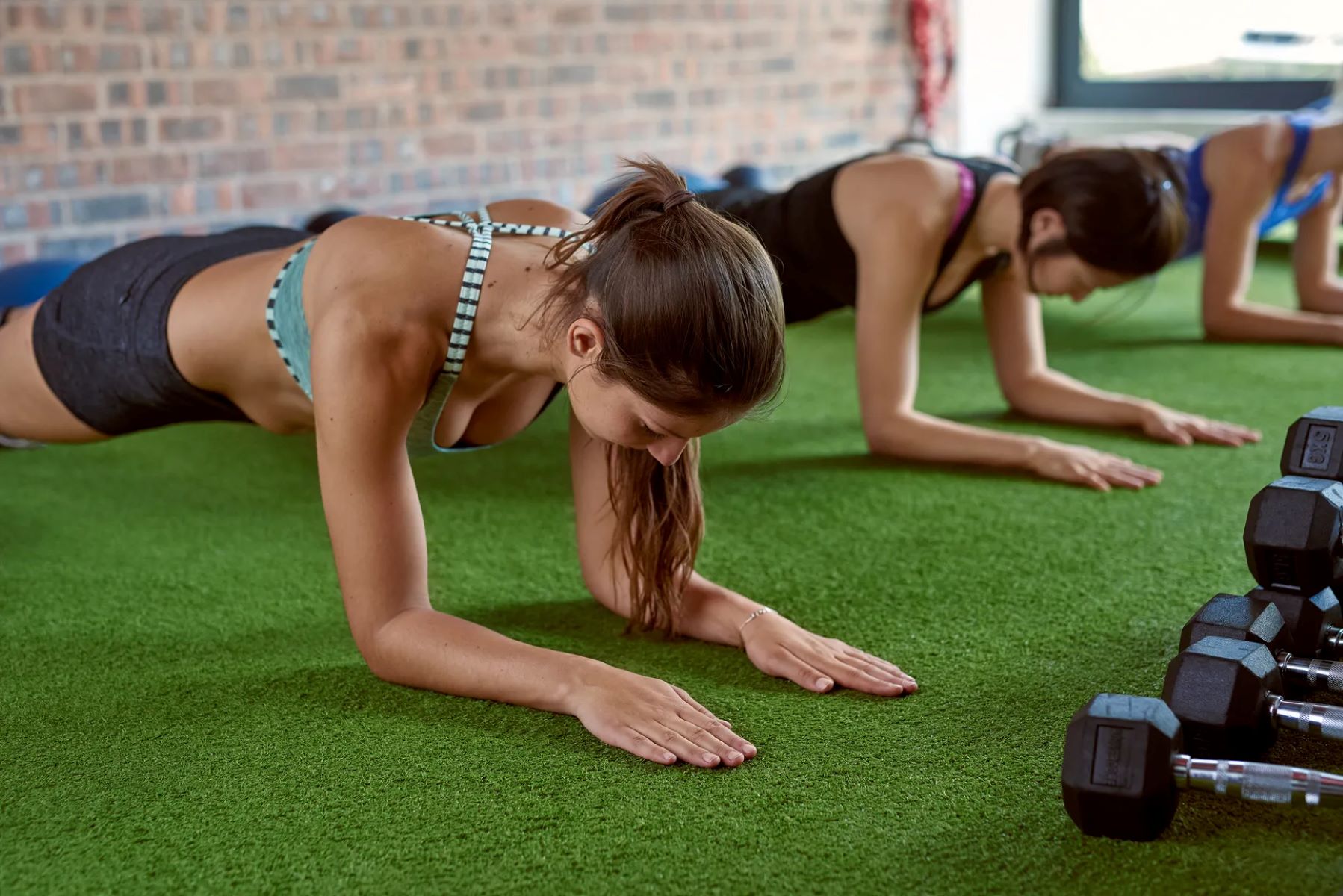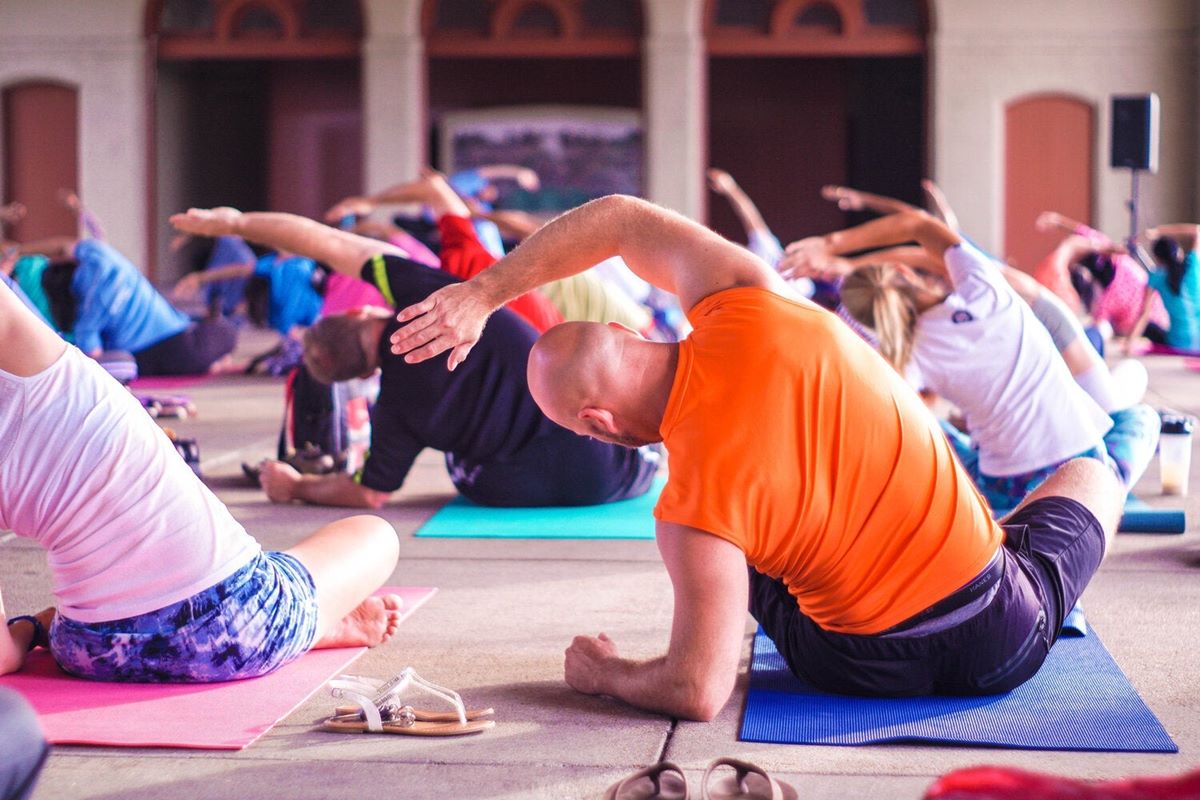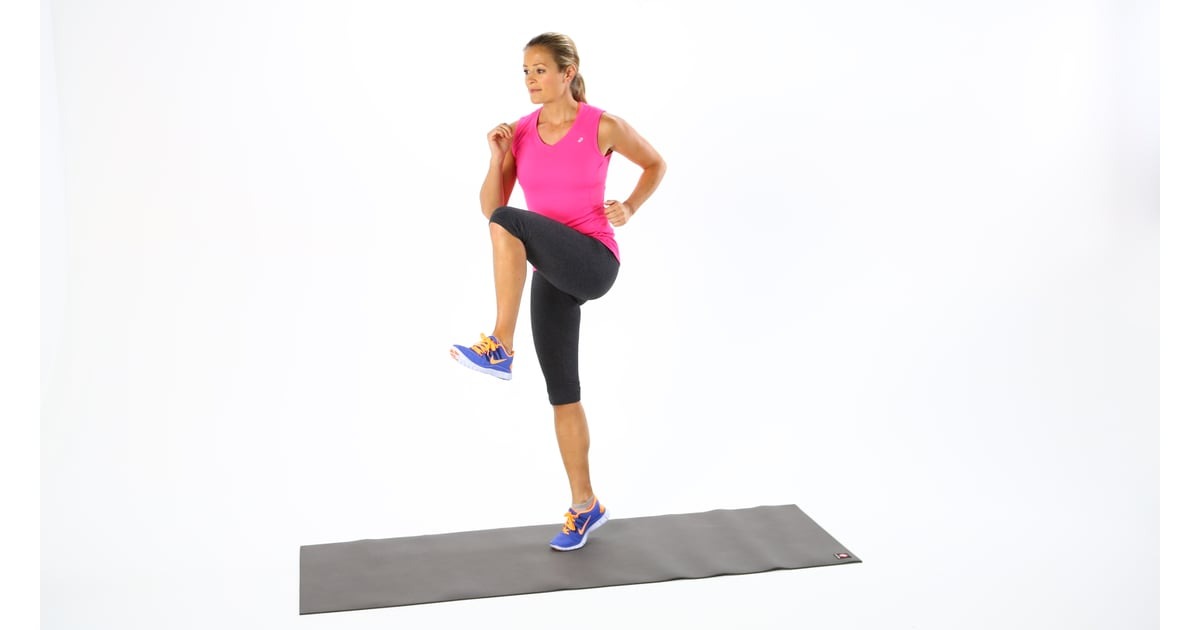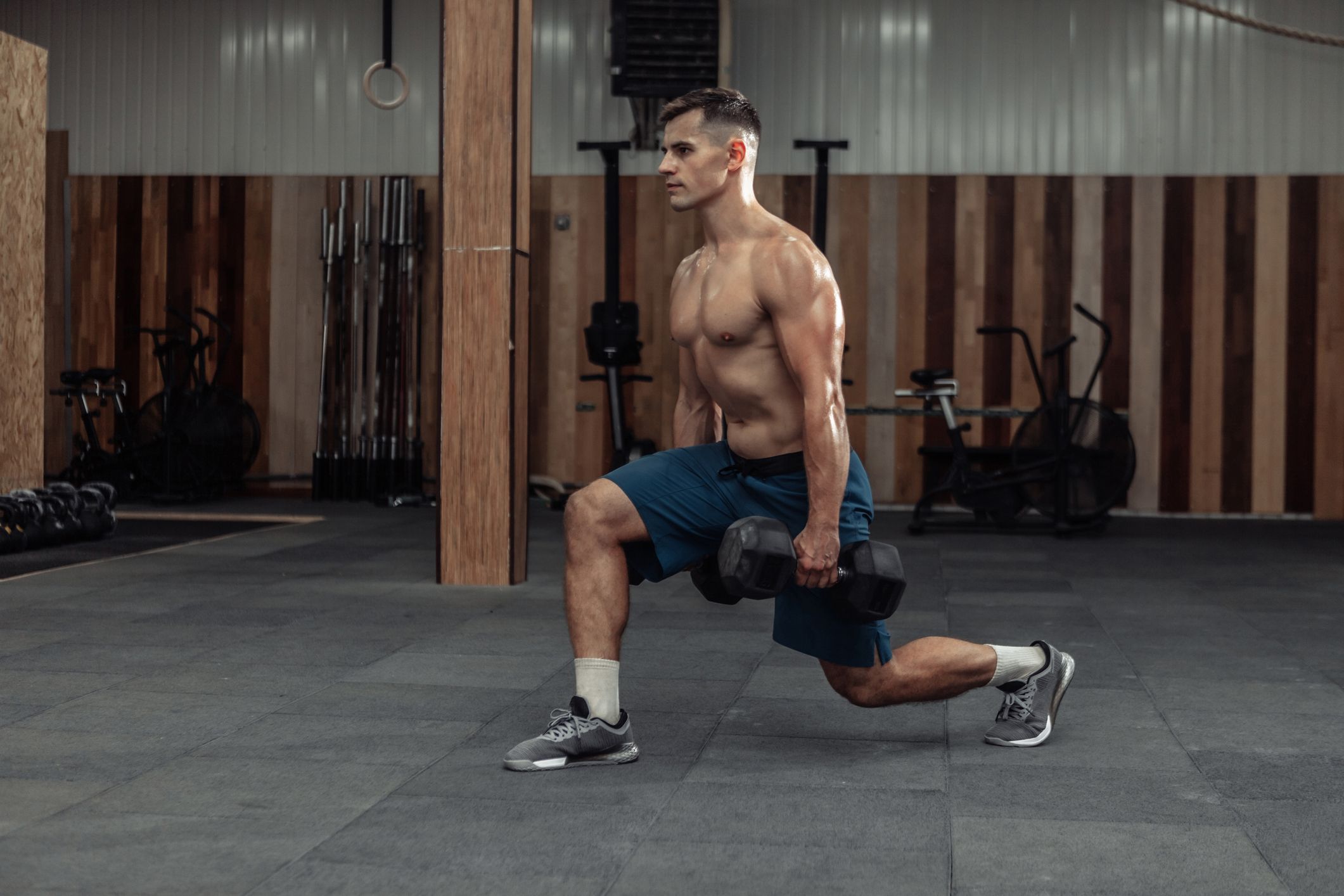

Featured
What Do Lunges Workout
Modified: August 21, 2023
Discover the benefits of lunges and how they can improve your lower body strength and balance. Get featured workout tips and techniques to maximize your results!
Introduction
Welcome to the world of fitness and exercise! If you’re looking to strengthen your lower body and improve your overall fitness, lunges are a fantastic exercise to incorporate into your routine. Whether you’re a seasoned athlete or just starting out on your fitness journey, lunges can be tailored to your individual needs and abilities. In this article, we will delve into the wonderful world of lunges, exploring their benefits, proper form, variations, and more.
Lunges are a type of bodyweight exercise that primarily target the muscles of your lower body, including your quadriceps, hamstrings, glutes, and calves. These compound exercises require you to step forward or backward, engaging multiple muscle groups simultaneously. Not only do lunges offer a great opportunity to build strength and endurance, but they also help improve balance, stability, and flexibility.
But what makes lunges such a popular exercise choice? The answer lies in their versatility and effectiveness. Lunges can be modified to suit almost any fitness level, from beginners to advanced athletes. Whether you prefer bodyweight lunges, weighted lunges, or adding a cardio element with jumping lunges, there’s a variation for everyone. Plus, lunges can be easily incorporated into any workout routine, whether you’re at the gym, at home, or even outdoors.
In the following sections, we will explore the specific muscles targeted by lunges, the benefits that come with incorporating them into your routine, and how to perform lunges with proper form. Additionally, we will discuss different variations of lunges that can help you take your training to the next level. So, let’s get ready to dive into the world of lunges and discover the incredible benefits they have to offer!
What Are Lunges?
Lunges are a popular and highly effective exercise that targets various muscles in the lower body. They are a type of compound movement, meaning they engage multiple muscle groups simultaneously. The basic lunge movement involves stepping forward or backward and lowering your body into a lunge position, with one knee bent at a 90-degree angle and the other leg extended behind.
There are several variations of lunges, each with its own unique benefits and challenges. The most common type is the forward lunge, where you step forward with one foot and lower your body until both knees are bent at 90-degree angles. The reverse lunge involves stepping backward instead of forward. Side lunges, on the other hand, require stepping sideways while maintaining a wide stance and bending one knee while keeping the other straight.
Lunges can be done with bodyweight alone or with added resistance such as dumbbells, barbells, or kettlebells. They can also be performed dynamically as part of a cardio or plyometric routine, like jump lunges or walking lunges. The versatility of lunges allows you to tailor the exercise to your specific goals, whether it’s building strength, improving balance, increasing muscle endurance, or enhancing athletic performance.
One of the key benefits of lunges is that they target multiple muscle groups simultaneously. The primary muscles worked during lunges include the quadriceps (front of the thigh), hamstrings (back of the thigh), glutes (buttocks), and calves. Additionally, lunges engage the core muscles for stability and support, as well as the hip muscles for balance and proper alignment.
Not only do lunges help develop lower body strength and muscle tone, but they also improve balance, coordination, and flexibility. The unilateral nature of lunges means that they require each leg to work independently, helping to address muscle imbalances and improve functional movement patterns. Proper technique and execution of lunges can also help alleviate knee pain and strengthen the joints.
In the next sections, we will explore the specific muscles targeted by lunges, the benefits that come with incorporating them into your routine, and how to perform lunges with proper form. So, let’s dive deeper into the world of lunges and uncover the incredible benefits they have to offer!
Muscles Targeted in Lunges
When it comes to targeting and strengthening the lower body, lunges are a highly effective exercise. They engage multiple muscles simultaneously, allowing for a comprehensive workout that targets various muscle groups. Understanding the specific muscles involved in lunges can help you better appreciate the benefits and tailor your training accordingly.
The primary muscles worked during lunges include:
- Quadriceps: The quadriceps muscles, located on the front of your thighs, are heavily engaged during lunges. They play a crucial role in extending the knee joint and help control and stabilize the movement.
- Hamstrings: The hamstrings, located at the back of your thighs, are another key muscle group targeted in lunges. They act as dynamic stabilizers, assisting in knee flexion as you lower your body down into the lunge position and providing support during the movement.
- Gluteal Muscles: The gluteus maximus, medius, and minimus, collectively known as the glutes, are the largest muscles in your buttocks. They are heavily recruited during lunges to stabilize the hips and extend the hip joints as you push back up from the lunge position.
- Calves: The calf muscles, including the gastrocnemius and soleus muscles, located at the back of your lower legs, play a secondary role in lunges. They assist in maintaining balance and stability throughout the movement.
In addition to the primary muscles, lunges also engage several other muscles as secondary movers or stabilizers, including:
- Core Muscles: The core muscles, including the abdominals, obliques, and lower back muscles, play a vital role in providing stability and maintaining proper posture during lunges.
- Hip Muscles: The hip muscles, including the hip flexors, adductors, and abductors, help stabilize the pelvis and maintain proper alignment during lunges.
- Inner Thigh Muscles: The adductor muscles, located on the inner thighs, are also engaged to a certain extent during lunges, assisting in stabilizing the leg and controlling movement.
By targeting and strengthening these muscle groups, lunges can enhance lower body strength, improve muscle tone, and increase overall athletic performance. Having a well-rounded lower body workout that incorporates lunges can help you achieve functional fitness, improve balance and stability, and support daily activities and sports performance.
In the next sections, we will explore the benefits that come from incorporating lunges into your routine, as well as the proper form and variations of lunges. So, let’s dive deeper into the world of lunges and uncover the incredible benefits they have to offer!
Benefits of Lunges
Lunges offer a wide range of benefits that make them a staple exercise in any fitness routine. Not only do they target multiple muscle groups in the lower body, but they also provide numerous advantages for overall strength, endurance, balance, and flexibility. Let’s explore the key benefits of incorporating lunges into your workout regimen:
- Lower Body Strength: Lunges are highly effective at strengthening the muscles of the lower body, including the quadriceps, hamstrings, glutes, and calves. By regularly performing lunges, you can increase muscle strength and tone, leading to improved functional movement and performance in various activities.
- Improved Balance and Stability: Lunges require a high degree of balance and stability as you move through the exercise. By challenging and improving these aspects, lunges can help enhance your overall balance and stability, reducing the risk of falls and injuries in everyday life.
- Enhanced Core Strength: In order to maintain proper form during lunges, your core muscles, including the abdominals and lower back, are engaged to stabilize and support your body. This helps strengthen your core muscles, leading to better posture and spinal alignment.
- Increased Flexibility: Lunges involve stretching and lengthening the hip flexors and other muscles in the lower body. Regularly performing lunges can help improve flexibility in these areas, which is essential for maintaining good range of motion and preventing muscle imbalances.
- Better Functional Movement: Lunges mimic many of the movements we perform in our daily lives, such as walking, climbing stairs, and bending down. By strengthening the muscles involved in these movements, lunges can improve your ability to perform everyday tasks with ease.
- Caloric Expenditure and Fat Loss: Lunges are a compound exercise that engages multiple muscle groups, making them an effective calorie-burning exercise. By incorporating lunges into your workout routine, you can increase your overall caloric expenditure and contribute to fat loss and weight management goals.
- Versatility and Accessibility: One of the great advantages of lunges is that they can be modified to suit various fitness levels and goals. Whether you’re a beginner or an advanced athlete, you can adjust the intensity by using bodyweight alone or adding resistance. Plus, lunges can be performed anywhere, whether at the gym, at home, or even outdoors.
With all these benefits in mind, it’s clear that lunges are a fantastic exercise choice for strengthening and sculpting your lower body, improving overall physical fitness, and supporting functional movements in your everyday life. In the following sections, we will explore the proper form for lunges, different variations you can try, and common mistakes to avoid. So, let’s continue our journey into the world of lunges and unlock the full potential of this incredible exercise!
Proper Form for Lunges
To ensure you get the most out of your lunges and avoid unnecessary strain or injury, it’s crucial to maintain proper form throughout the exercise. Here’s a step-by-step guide to help you perform lunges with correct technique:
- Starting Position: Begin by standing tall with your feet hip-width apart. Keep your core engaged and shoulders relaxed.
- Step Forward: Take a big step forward with one leg, ensuring that your foot lands firmly on the ground. Your front foot should be placed far enough ahead that when you lower into the lunge, your knee does not extend past your toes.
- Lunge Descent: Lower your body by bending both knees, creating two 90-degree angles. Your front thigh should be parallel to the ground, and your back knee should be hovering just above the floor. Keep your torso upright, and avoid leaning forward or backward.
- Alignment: Check your alignment to ensure proper form. Your front knee should be directly above your ankle, and your back knee should be in line with your back hip. Maintain a straight line from your head to your tailbone.
- Pushing Back Up: Engage your front leg, particularly the heel and midfoot, to push yourself back up to the starting position. Keep the movement controlled and exhale during the exertion.
- Repeat on the Other Side: Step your front foot back to the starting position and repeat the lunge on the opposite side, alternating legs for an even workout.
Additional tips for maintaining proper form:
- Keep your gaze forward to maintain balance and prevent excessive strain on your neck.
- Avoid rounding your shoulders or hunching forward. Keep your chest open and upright throughout the movement.
- Engage your core muscles to stabilize your spine and prevent excessive arching of the lower back.
- Keep your weight evenly distributed between both legs, ensuring that you’re not leaning excessively to one side.
- Perform the lunges in a slow and controlled manner, focusing on using the targeted muscles rather than rushing through the movement.
By following these guidelines and paying attention to proper form, you can maximize the effectiveness of your lunges and minimize the risk of injury. As with any exercise, it’s essential to listen to your body and modify the movement as needed to suit your fitness level and any potential limitations or discomfort.
In the next sections, we will explore different variations of lunges that you can incorporate into your routine and discuss common mistakes to avoid. So, let’s dive deeper into the world of lunges and discover the endless possibilities for strengthening and sculpting your lower body!
Variations of Lunges
Lunges are a versatile exercise that can be modified and varied to add excitement, challenge, and progression to your workouts. By incorporating different variations of lunges, you can target specific muscle groups, increase intensity, and keep your fitness routine fresh. Here are some popular variations of lunges to try:
- Reverse Lunges: Instead of stepping forward, reverse lunges involve stepping backward with one leg. This variation places more emphasis on the glutes and hamstrings and can be beneficial for individuals with knee issues or limited mobility.
- Walking Lunges: In walking lunges, you take a step forward with one leg into a lunge position and then bring the back leg forward to meet the front leg in the standing position. This dynamic movement challenges coordination, balance, and endurance.
- Curtsy Lunges: Curtsy lunges are performed by crossing one leg behind the other leg and stepping into a lunge position. This variation engages the inner and outer thigh muscles, as well as the glutes, providing a unique challenge.
- Barbell or Dumbbell Lunges: Adding resistance with a barbell or dumbbells increases the intensity and helps build strength in the lower body. Holding weights in each hand while performing lunges can provide a greater challenge to the muscles.
- Jumping Lunges: Jumping lunges involve explosively switching leg positions while lunging, transitioning from a lunge position with one leg forward to the other leg forward in the air. This plyometric variation helps improve power, cardiovascular fitness, and coordination.
- Side Lunges: Side lunges are performed by stepping out to the side with one leg and bending that knee while keeping the other leg straight. This variation targets the inner and outer thighs, as well as the glutes and quadriceps.
- Elevated Lunges: Performing lunges with the front or back foot elevated on a step, bench, or platform increases the range of motion and engages the muscles more intensely.
- Split Squats: Split squats are a variation of lunges where the legs are staggered, with one foot positioned in front of the other. This challenges stability and can help correct muscle imbalances in the lower body.
These are just a few examples of the many variations you can incorporate into your lunge routine. Feel free to experiment with different combinations and find what works best for your fitness goals, abilities, and preferences. Remember to focus on maintaining proper form and executing each variation with control and stability.
Incorporating different lunge variations can provide a fun and challenging twist to your workouts, preventing boredom and ensuring continuous progress. It’s important to progress gradually and choose variations that are appropriate for your fitness level. As always, listen to your body and modify exercises as needed to accommodate any limitations or discomfort.
In the next section, we will discuss common mistakes to avoid while performing lunges. By being aware of these mistakes, you can optimize your form and prevent injuries. So, let’s continue our journey into the world of lunges and stay on the path to success!
Common Mistakes to Avoid in Lunges
Lunges are a highly effective exercise for targeting the lower body, but like any other exercise, proper technique is key to maximizing their benefits. To ensure you get the most out of your lunges and prevent injuries, here are some common mistakes to avoid:
- Incorrect Alignment: One of the most common mistakes in lunges is improper alignment. It’s important to keep your front knee aligned with your ankle, making sure it doesn’t extend past your toes. Similarly, your back knee should be in line with your back hip, avoiding unnecessary twisting or strain on the knee joint.
- Leaning Forward: Leaning too far forward during lunges can place excessive stress on the knees and compromise your form. Keep your torso upright and engage your core muscles to maintain proper alignment and stability.
- Collapsing Knee: Allowing your front knee to collapse inward or outward instead of tracking in line with your toes can put unnecessary strain on the knee joint. Focus on keeping your knees in alignment with your toes throughout the movement.
- Insufficient Range of Motion: Going through lunges with limited range of motion can greatly diminish their effectiveness. Strive to lower your body until both knees are bent at 90-degree angles, allowing for a full range of motion in the hips and knees.
- Excessive Forward Step: Taking an excessively large step forward can make it difficult to maintain proper balance and alignment during lunges. Ensure your step is moderate enough to maintain stability and control throughout the movement.
- Foot Position: Pay attention to your foot positioning during lunges. Make sure your feet are hip-width apart and pointing forward. Avoid excessively turning your feet inward or outward, as this can put strain on the knees and compromise your form.
- Speed and Control: Lunges should be performed in a controlled manner to effectively engage the targeted muscles. Avoid rushing through the exercise and focus on proper form and muscle activation with each repetition.
- Forgetting to Breathe: Breathing plays a crucial role in maintaining focus and stability during lunges. Remember to inhale as you lower your body into the lunge position and exhale as you push back up to the starting position.
By being mindful of these common mistakes and focusing on proper form and technique, you can minimize the risk of injury and maximize the benefits of lunges. If you’re unsure about your form, it can be helpful to work with a qualified fitness professional who can provide guidance and ensure you’re performing lunges correctly.
In the next section, we will provide some helpful tips for beginners looking to incorporate lunges into their fitness routine. So, let’s continue our journey into the world of lunges and set ourselves up for success in our fitness journey!
Tips for Beginners
If you’re new to lunges or just starting out on your fitness journey, incorporating this exercise into your routine can be a great way to strengthen your lower body and improve your overall fitness. To help you get started on the right foot, here are some valuable tips for beginners:
- Start with Bodyweight: Begin your lunges journey by practicing the exercise with just your bodyweight. This allows you to focus on proper form and technique without adding extra resistance. As you become more comfortable and proficient, you can gradually introduce weights or other variations.
- Master Proper Form: Before progressing to more advanced variations, make sure you have a solid foundation in the basic lunge movement. Take the time to learn and understand the correct technique, including proper alignment, balance, and range of motion.
- Engage Your Core: Activate your core muscles to stabilize your body during lunges. This not only helps to maintain proper form but also contributes to overall core strength and stability. Focus on pulling your belly button in towards your spine while performing the exercise.
- Take It Slow: Lunges, like any exercise, are more effective when performed with control and focus. Avoid rushing through the movement and instead, execute each lunge with deliberate and controlled motions. This will help maximize muscle engagement and prevent unnecessary strain.
- Listen to Your Body: Pay attention to how your body feels during lunges. If you experience any pain or discomfort, it’s important to modify or adjust the exercise to suit your needs. Do not push through pain, as it can be a sign of improper form or an underlying issue.
- Gradually Increase Intensity: As you gain strength and confidence, gradually increase the intensity of your lunges. You can do this by adding resistance, such as dumbbells or kettlebells, or incorporating more challenging variations like jump lunges or walking lunges.
- Rest and Recover: Give your body time to rest and recover between lunge workouts. This allows your muscles to repair and grow stronger. Aim for at least one to two days of rest between lunges or lower body workouts.
- Seek Professional Guidance: If you feel unsure about your form or have any specific concerns or limitations, consider working with a qualified fitness professional. They can provide personalized guidance and ensure you’re performing lunges safely and effectively.
Remember, Rome wasn’t built in a day, and progress takes time. Be patient and consistent with your lunges practice, and celebrate your achievements along the way. With proper technique, dedication, and a positive mindset, you’ll soon reap the benefits of this powerful exercise.
In the next section, we will discuss important precautions and safety guidelines to keep in mind when performing lunges. So, let’s continue our journey into the world of lunges and prioritize our well-being as we strive for better fitness!
Precautions and Safety Guidelines for Lunges
While lunges are generally safe and beneficial for most individuals, it’s important to take certain precautions and follow safety guidelines to prevent injuries and ensure a safe and effective workout. Here are some important precautions and safety guidelines to keep in mind when performing lunges:
- Warm Up: Before starting any exercise routine, including lunges, it’s crucial to warm up your muscles and prepare your body for the workout. Spend a few minutes engaging in light aerobic activity and dynamic stretching to increase blood flow and loosen up your muscles.
- Start Slowly: If you’re new to lunges or returning after a long break, start with fewer repetitions and lighter resistance. Gradually increase the intensity and duration of your lunges as your body adapts and becomes stronger and more flexible.
- Listen to Your Body: Pay attention to how your body feels during lunges. If you experience sharp or intense pain, dizziness, or difficulty breathing, stop exercising and consult with a healthcare professional. Pushing through pain or pushing yourself too hard can lead to injury.
- Maintain Proper Form: Focus on maintaining proper form and technique throughout the exercise. This includes proper alignment, avoiding excessive forward lean, and keeping your knees in line with your toes. Poor form can potentially stress the joints and increase the risk of injury.
- Use Proper Footwear: Wear comfortable and supportive athletic shoes that provide stability and cushioning. Proper footwear can help prevent foot and ankle injuries and provide proper support during lunges.
- Mind Your Surroundings: When performing lunges, make sure you have enough space and a non-slip surface. Clear the area of any potential hazards to prevent tripping or falling during the exercise.
- Avoid Overtraining: Like any exercise, it’s important to allow adequate rest and recovery time for your muscles to repair and grow stronger. Overtraining can lead to fatigue, decreased performance, and increased risk of injury. Aim for at least one to two days of rest between lunges workouts.
- Modify as Needed: Listen to your body and modify lunges as necessary to accommodate any physical limitations or injuries. You can decrease the range of motion, use support like a wall or chair, or choose a lower impact variation if needed.
- Stay Hydrated: Remember to stay hydrated before, during, and after your workout. Proper hydration is essential for optimal performance and overall health.
- Consult with a Professional: If you have any underlying health conditions or concerns, or if you are new to exercise, consider consulting with a qualified fitness professional or healthcare provider to ensure that lunges are suitable for you and to receive personalized guidance.
By following these precautions and safety guidelines, you can minimize the risk of injury and create a safe and effective lunges practice. Always listen to your body and prioritize your well-being as you strive for better fitness.
In the next section, we will discuss how to incorporate lunges into your overall workout routine. So, let’s continue our journey into the world of lunges and discover how to make them a valuable part of your fitness regimen!
Incorporating Lunges into Your Workout Routine
Now that you’re equipped with the knowledge of lunges and their numerous benefits, it’s time to explore how to incorporate this versatile exercise into your workout routine. Whether you prefer working out at the gym, at home, or outdoors, lunges can be easily integrated into any fitness regimen. Here are some tips on how to include lunges in your workout routine:
- Include Warm-Up: Start your workout with a dynamic warm-up routine that targets major muscle groups. This can include exercises like jogging in place, jumping jacks, or leg swings. Warming up prepares your body for the upcoming lunges and helps prevent injuries.
- Choose the Right Variation: Select a lunge variation that suits your fitness goals and current fitness level. If you’re a beginner, start with basic bodyweight lunges and gradually progress to more advanced variations or adding resistance like dumbbells or barbells.
- Pair with Other Exercises: Combine lunges with other exercises to create a well-rounded lower body workout. For example, you can alternate sets of lunges with exercises like squats, glute bridges, or calf raises to target different muscle groups and maximize the effectiveness of your workout.
- Consider Supersets or Circuit Training: Incorporate lunges into supersets or circuit training to make your workout more efficient and dynamic. Alternate between sets of lunges and other exercises with minimal rest in between to keep your heart rate elevated and challenge your muscles.
- Increase Intensity Over Time: As you become more comfortable with lunges, gradually increase the intensity by adding resistance, increasing the number of repetitions, or incorporating more challenging variations. Progressive overload is key to continue challenging your muscles and achieving progress.
- Plan Recovery Days: Allow your muscles time to recover and repair by incorporating recovery days into your workout routine. On these days, focus on light exercises, stretching, or active recovery activities to promote muscle repair and prevent overtraining.
- Stay Consistent: Consistency is key when it comes to incorporating lunges into your workout routine. Aim for at least two to three sessions per week that include lunges or lower body exercises to see progress and reap the benefits of this powerful exercise.
- Track Your Progress: Keep a workout journal or utilize fitness apps to track your progress. Record the number of sets, repetitions, and any additional weights or variations you incorporate into your lunges. Tracking your progress can help you monitor improvements and stay motivated.
- Stay Flexible: Don’t be afraid to mix things up and experiment with different lunge variations or workout formats. This keeps your workout routine fresh and exciting, preventing boredom and ensuring maximum engagement.
Remember, as with any exercise, it’s important to listen to your body and adjust the workout according to your abilities and any limitations or discomfort you may experience. If you’re unsure about the appropriate intensity or variations for your fitness level, consult with a qualified fitness professional for guidance.
Incorporating lunges into your routine provides a great opportunity to strengthen and sculpt your lower body, improve balance and stability, and enhance overall fitness. So, let’s get started on integrating lunges into our workout routine and reap the many benefits they have to offer!
Conclusion
Congratulations on completing our comprehensive guide to lunges! You now have a deep understanding of this versatile exercise, its benefits, proper form, variations, and how to incorporate it into your workout routine. Lunges are an incredibly effective exercise for targeting and strengthening the muscles of the lower body, improving balance, stability, flexibility, and overall fitness.
By engaging in regular lunges, you can develop lower body strength, increase muscle tone, and enhance functional movement patterns. The versatility of lunges allows you to modify the exercise to suit your fitness level and goals, whether you’re a beginner or an advanced athlete.
Remember to prioritize proper form and technique when performing lunges to maximize their effectiveness and prevent injury. Be mindful of common mistakes to avoid, such as incorrect alignment, leaning forward, or collapsing knees.
As you progress in your lunges journey, feel free to experiment with different variations to challenge your muscles and add variety to your workouts. Whether it’s reverse lunges, walking lunges, or jump lunges, each variation provides unique benefits and keeps your workout routine exciting.
Additionally, don’t forget to listen to your body, rest when needed, and stay hydrated throughout your lunges workouts. It’s important to maintain a balance between pushing yourself to achieve your goals and allowing your body time to recover and grow stronger.
We hope this guide has empowered you with the knowledge and resources to incorporate lunges into your fitness routine confidently. Consult with a qualified fitness professional if you have any specific concerns or physical limitations.
Now, it’s time to take action! Get up, lace up your shoes, and start lunging your way towards a stronger, fitter, and healthier version of yourself. Embrace the challenge, be consistent, and enjoy the incredible benefits that lunges have to offer. Here’s to your success in your fitness journey!



